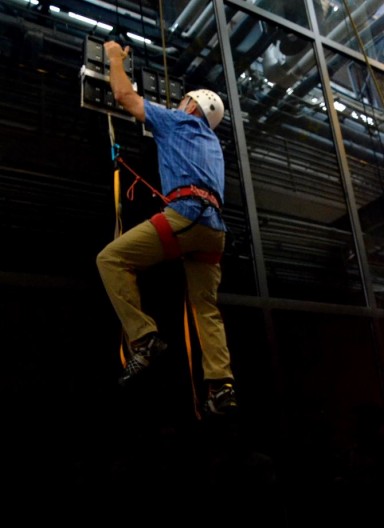
DARPA’s Z-man technology allows militaristic forces to perform gravity-defying tasks such as scaling walls, climbing glass surfaces, and overcoming difficult obstacles that may arise during warfare. This biologically inspired climbing innovation will ameliorate troop safety and enable maneuverability anywhere in the world and on virtually any surface.
These climbing aids will assist individuals with an array of missions spanning any terrain without using traditional climbing gear like ropes or ladders. The team at DARPA was inspired by animals like spiders and geckos adhere to vertical walls with ease. The process of adhesion developed used van der Waals intermolecular forces or hook-into-surface asperities. DARPA’s Z-man system will fabricate manmade editions of these animalistic climbing aptitudes and allow climbing on a level humans can achieve.
Developed by the Draper Laboratory team in Cambridge, MA, Geckskin is a synthetic substance with reversible adhesion that was inspired by the gecko’s multisurface climbing prowess. Adhesive pads attached to Z-Man “mimic the gecko foot over multiple length scales, from the macroscopic foot tendons to the microscopic setae and spatula, to maximize reversible van der Waals interactions on the surface,” DARPA explains on its website. DARPA’s program manager, Dr. Matt Goodman, stated, “Like many of the capabilities that the Department of Defense pursues, we saw with vertical climbing that nature had long since evolved the means to efficiently achieve it. The challenge to our performer team was to understand the biology and physics in play when geckos climb and then reverse-engineer those dynamics into an artificial system for use by humans.”
The most recent additions to this endeavor include the establishment of Geckskin, a stiff fabric with internal elastomer that sits on a surface to comply with the surface. This creates increased adhesion, as the proof-of-concept was tested on a 16-square-inch sheet of Geckskin attached to an upright wall of glass, supporting a whopping 660 pounds. It will be interesting to track Z-man's developments in the future.
Story via DARPA
Advertisement





